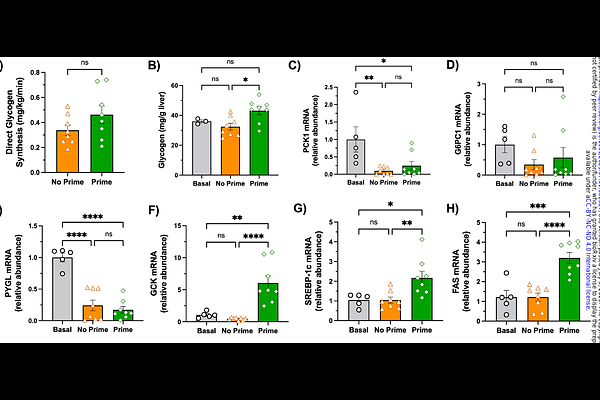Morning Elevation in Insulin Enhances Afternoon Postprandial Insulin Action and Glucose Effectiveness

Morning Elevation in Insulin Enhances Afternoon Postprandial Insulin Action and Glucose Effectiveness
Waterman, H. L.; Smith, M.; Farmer, B.; Yankey, K.; Howard, T.; Kraft, G.; Cherrington, A.; Edgerton, D.
AbstractThe second meal phenomenon refers to the improved glycemic response observed after consuming a second identical meal. It is well known that postprandial hepatic glucose uptake (HGU) is determined by the combined effects of three regulatory factors: insulin action (hyperinsulinemia; HI), glucose effectiveness (hyperglycemia; GE), and glucose delivery into the hepatoportal circulation (portal glucose signal; PGS). While our previous studies demonstrated the importance of morning (AM) hyperinsulinemia in priming the liver for increased HGU later in the day, the question remains as to which aspect of the afternoon (PM) response is enhanced by morning insulin. Thus, to provide insight into the underlying mechanism of the 2nd meal effect, we sought to determine the extent to which PM HI, GE, and the PGS are impacted by AM hyperinsulinemia. Dogs underwent an AM clamp with either a 4h hyperinsulinemic prime (Prime, n=8) or basal insulin delivery (No Prime, n=8). After a 1.5h non-clamp period, both groups were challenged with a PM hyperglycemic clamp (with the PGS) in the presence of basal insulin. During the PM clamp, net HGU was significantly elevated in Prime vs. No Prime group (mean of 2.2{+/-}0.3 vs. 0.1{+/-}0.3 mg/kg/min, respectively, P<0.005), indicating an enhancement of GE and/or the PGS. There was no difference in PM non-HGU (4.5{+/-}0.3 vs. 4.0{+/-}0.3 mg/kg/min). In previous experiments, when all three factors (HI, GE, PGS) were present in the PM, net HGU was 6.3{+/-}1.7 vs. 2.4{+/-}1.1 mg/kg/min in groups receiving an AM insulin prime vs. basal insulin, respectively. Therefore, the AM insulin prime enhanced the effects of HI, GE, and the PGS on PM HGU by 3.9 mg/kg/min, whereas it enhanced the effects of glucose (GE and the PGS), in the absence of a rise in insulin, by 2.1 mg/kg/min. Taken together, the data show that AM HI enhanced PM insulin action and GE (including the PGS) to an equal extent. This suggests that AM insulin priming enhances cellular targets common to both insulin and glucose signaling in the PM.